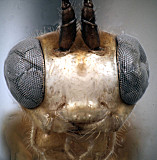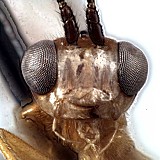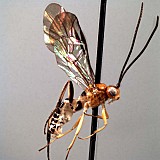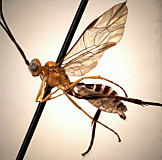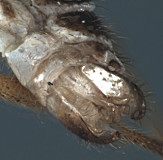Physotarsus albus Zhaurova, 2009
Physotarsus albus is readily recognized by the uniformly lightly colored wing and contrastingly white face and clypeus on an orange head. No other species has the same color pattern on the fore wing. Physotarsus leucohypopygus Zhaurova, similar in size and body sculpture, also know only from Brazil, has a uniformly colored head and hyaline wings with fuscous spot at apex. The wing of P. flavipennis Zhaurova is somewhat similar, but with a dark apical spot and P. flavipennis is distinctly punctate on the face, frons, and mesopleuron.
There are no specimens currently determined for this OTU, or those specimens determined for this OTU are not yet mappable.
This material is based upon work supported by the National Science Foundation under Grant Number DEB 0328922 with REU supplement DEB 0723663.
Any opinions, findings, and conclusions or recommendations expressed in this material are those of the author(s) and do not necessarily reflect the views of the National Science Foundation.

